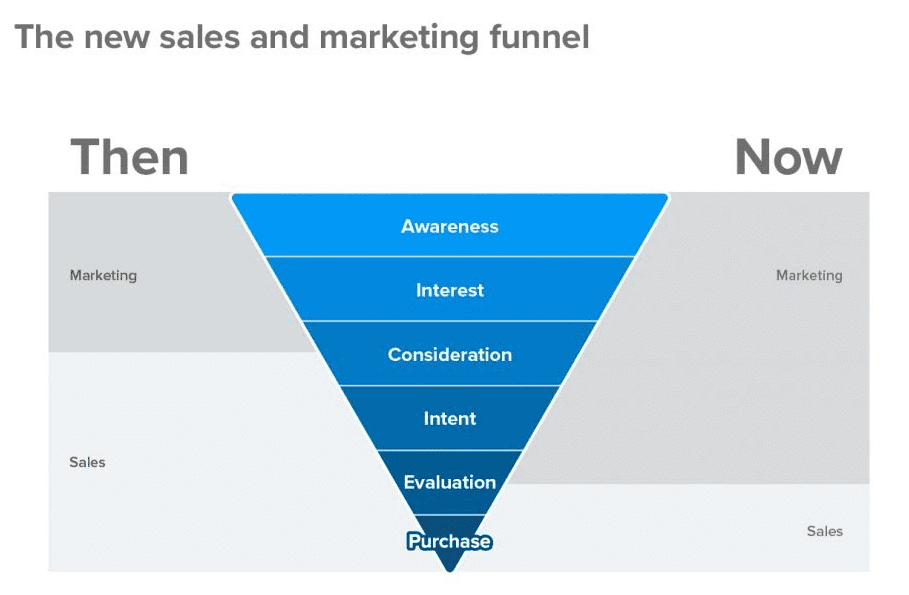The marketing department is responsible for generating leads, and the sales team is in charge of converting those leads into customers. However, these departments have always had a strained relationship with each other – one that often ends up hurting business.
Instead of being competitive, it’s important to understand how both teams can work together to create a mutually beneficial relationship between sales and marketing. Let’s start by looking at why this relationship has been so difficult historically: Each side thinks they’re doing all the work while the other side sits back and reaps all the benefits.
In reality, neither department operates in a vacuum; they are both equally accountable for revenue generation – which means any effort on one side should mutually benefit the other.
Ideally, to click with customers marketing and sales need to be on the same page.
Why is it Important to Bridge the Divide?
Sales and marketing have long been considered two separate entities, but they are inextricably linked. The old way of thinking was that marketing would push a product to the customer and sales would then convince them why it’s worth buying.
This cross-departmental collaboration is key because it allows organizations to create a more personalized experience for their customers while also generating higher conversion rates.
In addition to improving customer satisfaction levels, this type of cooperation between departments can also lead to increased profitability through better return on investment (ROI).
Let’s delve a bit deeper into how sales and marketing teams can make this happen
1. Knowing that Sales and Marketing Have to Meet the Same End Objective
Sales and marketing are both essential in generating revenue for a company. Marketing is the process of promoting products or services to create awareness about them, while sales are the act of persuading people to buy these products.
The end goal for both is to build new customers, build brand awareness and increase revenue from either new customers or current ones. Sales and marketing should work together because they can help each other reach their goals easier than if they were working alone.
2. Bringing Marketing and Sales Automation Tools into the Fray
Marketing automation tools can help create a robust and streamlined hand-off process from marketing to sales. This helps reduce friction between teams by defining a strategy and outlining steps for completing the hand-off process.

Source: Sellizer.io – an example of proposal software
Identifying and addressing common problems that may arise during the hand-off process will result in leads being utilized more effectively and the sale being taken to the logical end.
3. Knowing that Each Profile Demands a Unique set of Abilities
The benefits of sales and marketing working together in harmony are that it helps understand the nuances and nitty-gritty of each other’s work profile.
While marketing is all about employing inbound techniques for nurturing and qualifying leads sales is more about outbound strategies.
It would be best if sales and marketing teams come to the understanding that both have an equal amount of challenges and it would be ideal if each of them would not step into each other’s turf.
They can achieve the best results by focusing on the individual capabilities they are cut out for.
4. Being on the Same Page while Profiling Customers and Prospects
The best case scenario would be if sales and marketing have a good understanding of the customer personas. This would make it possible to communicate with customers and prospects with a consistent brand voice while understanding the sensitivities.
By preparing a common ground on whom you’re selling to will help both sales and marketing apply this knowledge in marketing strategy, product development, and sales comprehensively and cohesively.
5. Create Opportunities for Sharing Technical Resources
If you’ve been running a business for long, chances are you’ve noticed that your sales and marketing teams call the shots independently of one another. This results in the business operating with a different understanding of what the other side is doing.
This can be downright dangerous for the company’s bottom line.
Different Stages of Sales and Marketing Funnel

Source: Sujan Patel
This necessitates marketing teams to constantly share resources that were used for the top and the middle of the funnel prospecting so that sales teams can build more context and understanding about the prospects.
In return, sales can keep marketing informed about the lead response.
6. Keeping Communication Channels Open between Sales and Marketing
It all starts with setting up a marketing calendar to ensure that the right content is being created at the right time.
This should be followed by monthly meetings between sales and marketing to keep everyone in sync.
While project management show what needs to be done next – daily or weekly communications depending on how often things change will forge strong bonds with the teams.
Conclusion
The sales and marketing departments should be working together to get the suitable outcomes for a company. These professionals have different responsibilities but they are ultimately playing for the same team. If they don’t learn to work together effectively, they will potentially lead their organizations down a path of failure.
It necessitates the importance of these two professions to work together to achieve their full potential and avoid unnecessary conflict.


